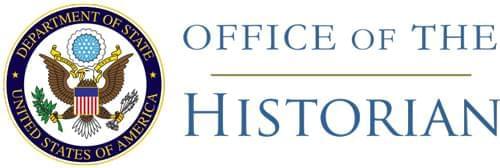411.9141/12–1654
Memorandum by the Deputy Assistant Secretary of State for Near Eastern, South Asian, and African Affairs (Jernegan) to the Assistant Secretary of State for Economic Affairs (Waugh)1
Subject:
- Program for India under Public Law 480
In our memorandum to Mr. Kalijarvi of November 29, we referred to India’s request for US consideration of the supply by the United [Page 1798] States to India of surplus agricultural commodities, involving 4.5 to 5 million tons of wheat over a three-year period. Representatives of interested US agencies agreed, and the GOI was informed, that we would reply to its request and repeated enquiries when legislation was available. We have had Public Law 480 for some time now, but no constructive reply has been made despite earlier interagency agreement.
NEA proposed a substantial program in response to the Indian Government’s request and stated that, if necessary to assure a Public Law 480 arrangement of the magnitude proposed, NEA believed that the ceiling of $400 million under which the programs were being operated should be revised upwards.
India remains, for reasons stated in the earlier memorandum, the ideal country in which to satisfy the requirements of Public Law 480, particularly with respect to the development and expansion of demand for agricultural commodities and the achievement of our foreign policy objectives through encouragement of economic development.
The Francis Committee,2 at its December 7 meeting, adopted an over-all program for FY 1956 totalling $453 million and including a figure of $40 million for India. The palpable inconsistency of this $40 million figure in view of the almost unique opportunity in India to implement Public Law 480 is clear when it is noted that this $40 million is actually about $24.4 million in market value, and that perhaps less than 50 per cent of the rupees derived from the $24.4 million program will be available as loans for economic development. The remainder of the rupee proceeds are, I understand, contemplated for US Government expenditures.
In terms of the possibly unique opportunities offered by India’s circumstances, the low program figure and the treatment of the rupee sales proceeds constitute an absurdly inadequate position.
In addition to the above considerations, there are significant political considerations involved in a more adequate response to the Indian Government’s proposals. Prime Minister Nehru has recently voiced publicly [Page 1799] his appreciation of President Eisenhower’s peaceful intent in world affairs, thus laying a foundation for improved U.S. relations with India. An adequate Public Law 480 program could be of assistance in furthering this objective.
In view of the fact that the Francis Committee has itself already broken the $400 million ceiling, NEA believes that there are compelling considerations for an adequate and more substantial India program. I know and appreciate the efforts you and your staff have already made in this regard, but, if at all possible, I would appreciate another attempt by you to increase the program to approximately $87 million at market cost.
This would enable India to carry out a purchase program of 1,000,000 tons, which is justified in detail by the Embassy in a despatch drafted by the Agricultural Attaché—No. 596 of December 6, 1954.3 Note that a part of the 1,000,000 tons could be for delivery after June 1955 according to the Embassy’s justification.
- This memorandum was drafted by Delaney of SOA.↩
- The reference is to “The Interagency Committee on Agricultural Surplus Disposal”. Under the terms of the Agricultural Trade Development and Assistance Act of 1954 (68 Stat. 454), known as Public Law 480, President Eisenhower was empowered to establish an administrative mechanism to supervise the implementation of this legislation. Therefore, he officially established, in Executive Order 10560, “The Interagency Committee on Agricultural Surplus Disposal” on Sept. 9, 1954, with Clarence Francis, Special Consultant to the President on Surplus Agricultural Products, as its chairman. In addition, the following agencies had representation on the committee: the Department of Agriculture; the Foreign Operations Administration; the Departments of State, Defense, Commerce, and Treasury; the Bureau of the Budget; the Office of Defense Mobilization; the General Services Administration; and the Board of Governors of the Federal Reserve System. For further information regarding the creation of this special committee, see the Department of State Bulletin, Oct. 4, 1954, pp. 498–502. Documentation regarding the operations of the Francis Committee is in Department of State files 411.0031, 811.20, and 811.312.↩
- Not printed. (891.2311/12–654)↩
